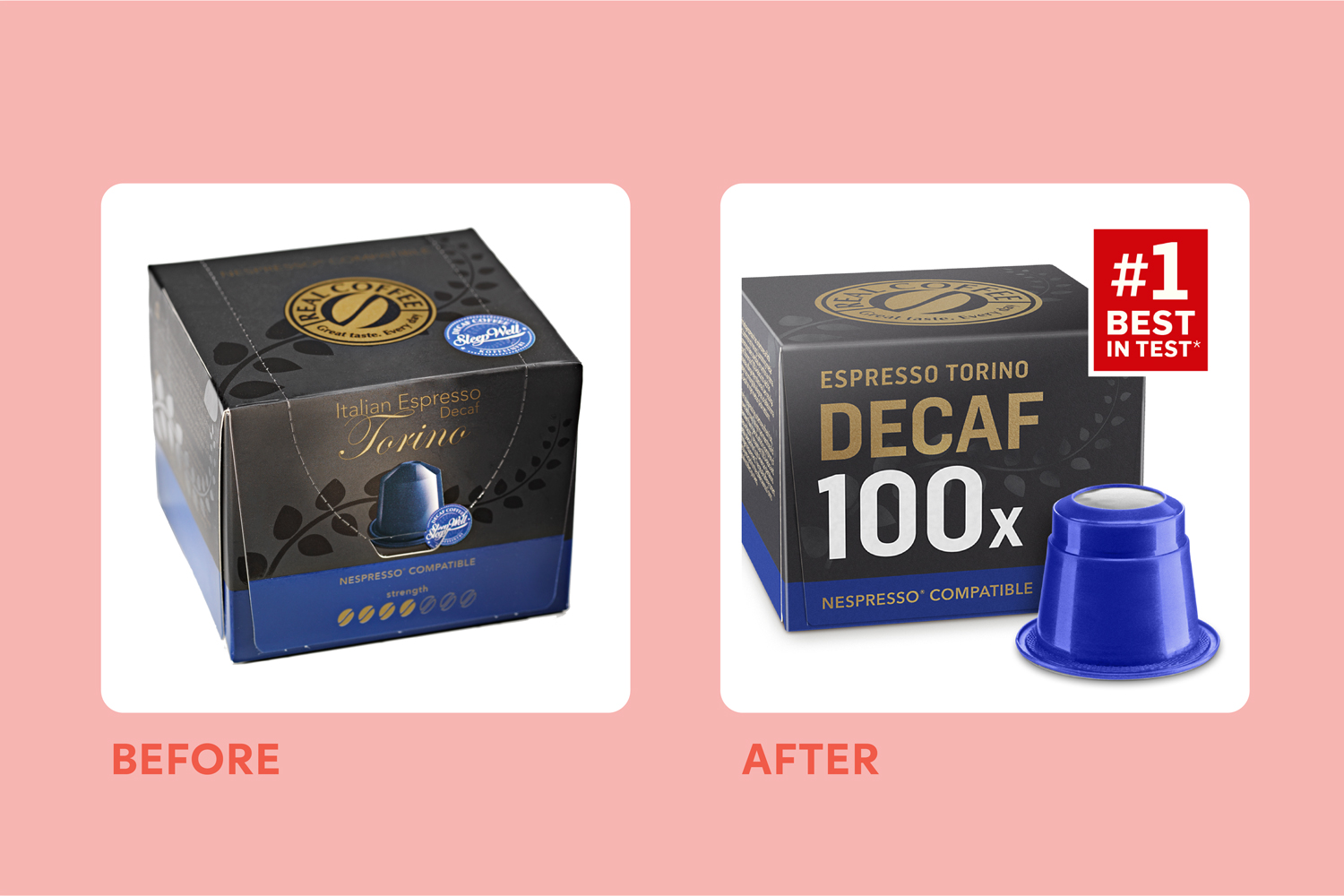
Standing Out on the Digital Shelf.
As e-commerce continues to grow, the shopping experience as we know it is under pressure. Online shopping now accounts for 15% of retail sales, Mary Meeker stated in her Internet Trends Rapport 2019. According to Statista, by 2021, it is expected to be 17.5%. Why? Because it is convenient, cheap and intrinsically customer-centric.
As shoppers turn to the web, a brand’s presence, products, and imagery need to adjust accordingly to capture their attention. And while physical retail has dictated shelf stand-out for years, the digital shelf is a somewhat different animal. The question is, thus, how do you make the most of only 80 pixels?
K.I.S.S.
As the old principle goes, keep it simple stupid goes for the web too. In Q3 2018, smartphones accounted for 61 per cent of retail site visits worldwide, according to Statista. On small screens, it is crucial to have a simple image hierarchy. If your product imagery is adapted to its context and online shoppers’ needs, it will likely end up in the digital shopping cart.
So, start by defining the intention of the product image. Which attributes should be clear in the photo, and which functional or emotional features should or shouldn’t be conveyed? This might require killing a few darlings, as clarity forces you to rethink the visual messaging.
Also, consider information like brand, format, variant, and pack count or size. This helps you create a hierarchy of information that balances the product text and image into one coherent online experience.

The Case of Real Coffee
Danish company Real Coffee has been making a direct-to-consumer business entirely on the digital shelf. With a wide range of Nespresso and Dolce Gusto compatible coffee capsules, they’ve been growing steadily on the Danish, Swedish, Norwegian and has now entered the English, German and American online markets through Amazon. Yet, with Amazon becoming a favoured product information site, the company decided to go all-in on Amazon in the quest for being shoppers’ favourite choice.
To increase their growth, we developed a series of Mobile Hero Images to use on the Amazon UK webshop following our best practice learnings from a number of studies and experiments of our own. We distilled their message and brand into a simple and recognisable picture that would increase their click-through rate on Amazon. A simple yet impactful exercise that increased the click-through rate by 67% per cent. And was also awarded the ‘Amazon’s choice’ within the coffee capsule category.
“Amazon is all about prize and speedy delivery. This nurtures a platform where customers show low amounts of brand loyalty. For us, it is especially important to stand out on the digital shelves and instantly capture shoppers’ attention. That is why we’re so thrilled about the result. It clearly shows how design can drive a positive commercial impact.”
— Lars Mansfeld-Giese, Managing Director at Real Coffee
One Size Doesn’t Fit All
Although K.I.S.S is a good place to start, there is no secret formula for Mobile Hero Images. Today, too many look alike, and few brands excel at presenting an online product experience with a clear identity. Rather than compromising the brand, marketers and designers need to figure out how to create a branded experience online. Mobile Hero Images is a part of realising your brand’s potential online and ensuring a consistent and recognisable experience across digital platforms.
The solution is also highly dependent on the category. Images of food have different requirements from vacuum cleaners. The product is purchased for different reasons and targets different needs. Just like in the physical stores. And with Amazon’s increasing focus on voice technologies and shopping, it is exciting to see how this kind of branding and marketing executions will evolve and influence shopping and consumer tendencies.
All we know is that your products’ digital stand-out is increasingly important. And doing online what you do offline won’t get you long.